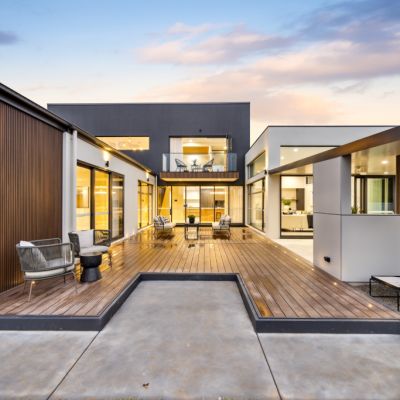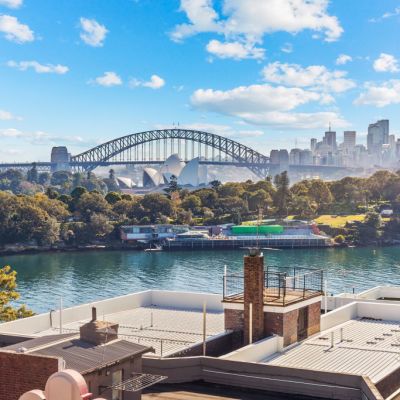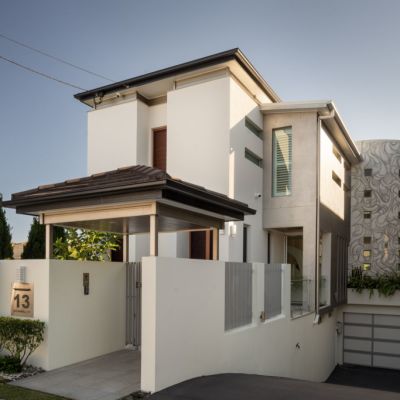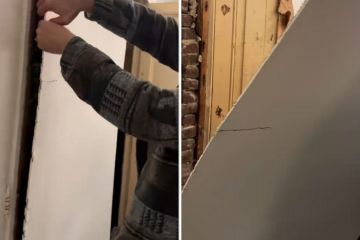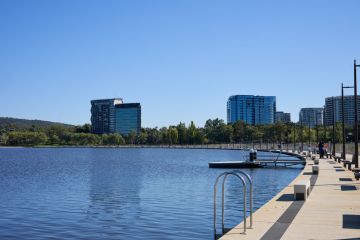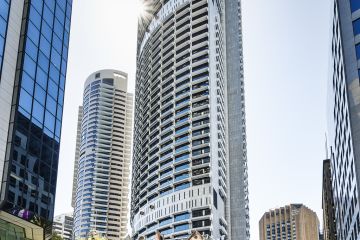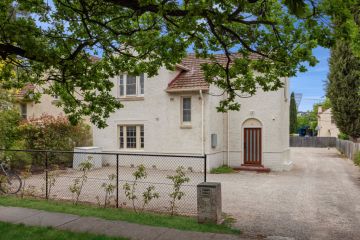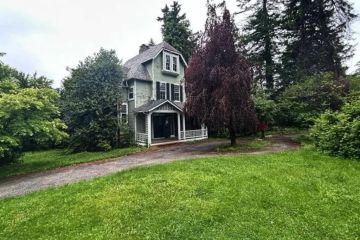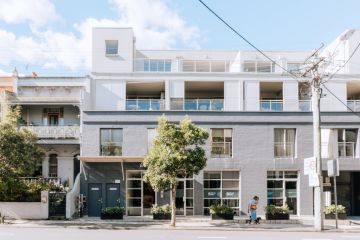Melbourne suburbs where house values rose most over 20 years
Tim and Loren Horster-Haarburger count themselves lucky. The Millennial couple sold their Cobblebank home near Melton in Melbourne’s outer west, just two weeks after listing it.
The Horster-Haarburgers, who have an 18-month-old daughter Ivy, made $200,000 on the four-bedroom home they built six years ago, after it sold for $646,000. The couple now plan to move back to Bacchus Marsh where they both grew up.

“We were so lucky to get in at such a great time,” Loren, 30, said. “We bought before the big [COVID-induced] property boom and before building became more expensive.”
“We got in like a month before the big boom and if we had waited I think it would have cost double,” said Tim, 32, who works four days a week from home and one day in the office as a joinery draftsperson. “This was such a great stepping stone for us.”
House values have soared in Melbourne’s outer suburbs over the past two decades, data from Cotality, formerly CoreLogic, shows, as buyers compete for an affordable place to live and new development booms.
A huge shift of Millennial buyers is one of the main causes, experts say, as those who can’t afford exorbitant inner-city house prices chase a family home on the city’s fringes.
In Cobblebank, house values have jumped 309.1 per cent, to a median of about $637,000, though the newer suburb was officially established in 2017. The 20-year data takes in the area that includes these newer suburbs.
Nearby Bonnie Brook soared 327.3 per cent to a median of almost $690,000.
In Melbourne’s outer north, Donnybrook house values jumped 294.1 per cent, to more than $722,000. Nearby Mickleham rose 289 per cent to almost $724,000.
The increases have come as new house and land packages have been rolled out in Melbourne’s growth corridors, and more residents have moved in. Melton’s local government area had nearly 79,000 residents in 2006, ABS Census data shows, more than doubling to 178,960 a decade and a half later.
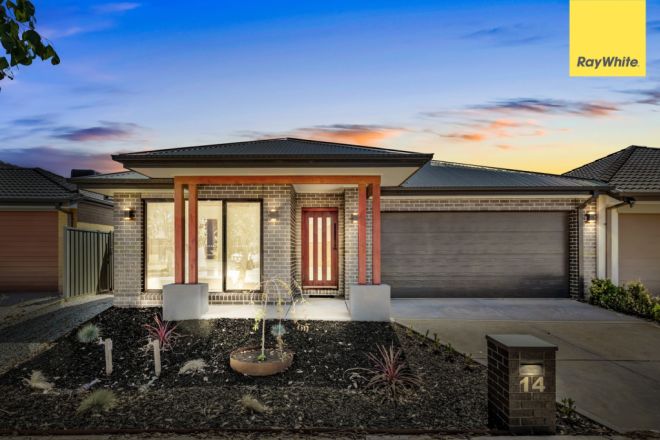
But in a tale of two cities, the strongest growth was in desirable inner suburb Kew East, which flew 349.5 per cent to a median $2.12 million. Neighbouring Balwyn and Balwyn North rose more than 300 per cent each.
Cotality’s head of Australian research Eliza Owen said inner-city house value rises were fuelled by wealthier buyers and a lack of available properties rather than the shift of Millennials seeking family homes.
“It’s the highly exclusive parts of the market that see the biggest growth in value,” Owen said. “And it’s these parts of the inner city that represent the most desirable and most scarce properties because there is no more developable land.”
Owen said the pandemic and remote working prompted a shift in where buyers are purchasing, allowing them to live further from CBD offices.
“It’s really not so much of a surprise to see house values in outer suburbs grow, because of this normalisation of remote work and the Millennial shift – but I think there will be limitations to how far it can go, as higher interest rates and affordability issues bite,” Owen said.
The Demographics Group co-founder Simon Kuestenmacher said Millennials – born between the early 1980s and mid-1990s – are now the largest generation ever in Australia, and were already changing the face of some of Melbourne’s outer suburbs.
Those who once lived in trendy inner-city enclaves, but were priced out, are moving to outer suburbs to buy.
He said it meant the outer suburbs are “hipsterising”, with trendy places to have a coffee.

With substantial greenfield development in Melbourne, prices will remain cheaper than other capital cities, although he noted the lack of infrastructure being built like schools, supermarkets and public transport.
Even so, Millennials are expected to keep moving to the fringes for at least the next 12 years, he said, as they couple up and have a family.
Kuestenmacher said new migrants are also driving the trend to the affordable outer suburbs.
“They want large homes so they move to areas like Point Cook,” he said. “Migrants don’t have the backing of the bank of mum and dad so they choose to live somewhere affordable.”
Investors are catching on. Ray White Melton’s Martin Mintoff, the Horster-Haarburgers’ agent, said investors were becoming a larger part of the outer suburban buying market, pushing up values.
“At the moment we’re seeing a massive shift. Investors were cashing out, but now we’re seeing investors from Perth, Sydney and Brisbane in particular,” Mintoff said. “A lot of them are paying figures that were unheard of for four-bedroom houses.”
Buyer’s advocates were looking for off-market deals for their interstate clients, he said, and the outer west market has shifted from 80 per cent owner-occupier buyers and 20 per cent investors, to 50-50.
It was similar in outer northern suburbs like Donnybrook. Harcourts Mernda’s Vanny Bains said while prices had been rising, the past 12 months were challenging, given the rises in interest rates – before the recent reductions.
“It’s all doing OK now,” Bains said. “We’re expecting things to go back to normal as interest rates keep dropping this year.”
Local investor Sarbjeet Singh hopes to see the market pick up again. Over the past six months Singh has listed three houses in Donnybrook for sale, building them over the past few years through volume builders.
All have sold to various buyers – the latest to a young family. Last year he sold to a Sydney investor who had not seen through the house.

“Price-wise, houses are 40 per cent cheaper than Sydney,” Singh said. “The same house up there would cost $1.1 million to $1.2 million.”
Singh agreed prices had risen, but the past 12 months had been challenging for investors.
“In 2018 it was very good, you could sell within two weeks sometimes – at the moment it’s taking around three months,” Singh said. “I’m pretty much breaking even at the moment so that’s what I’m waiting for is interest rates to fall.”
We recommend
States
Capital Cities
Capital Cities - Rentals
Popular Areas
Allhomes
More
- © 2025, CoStar Group Inc.
